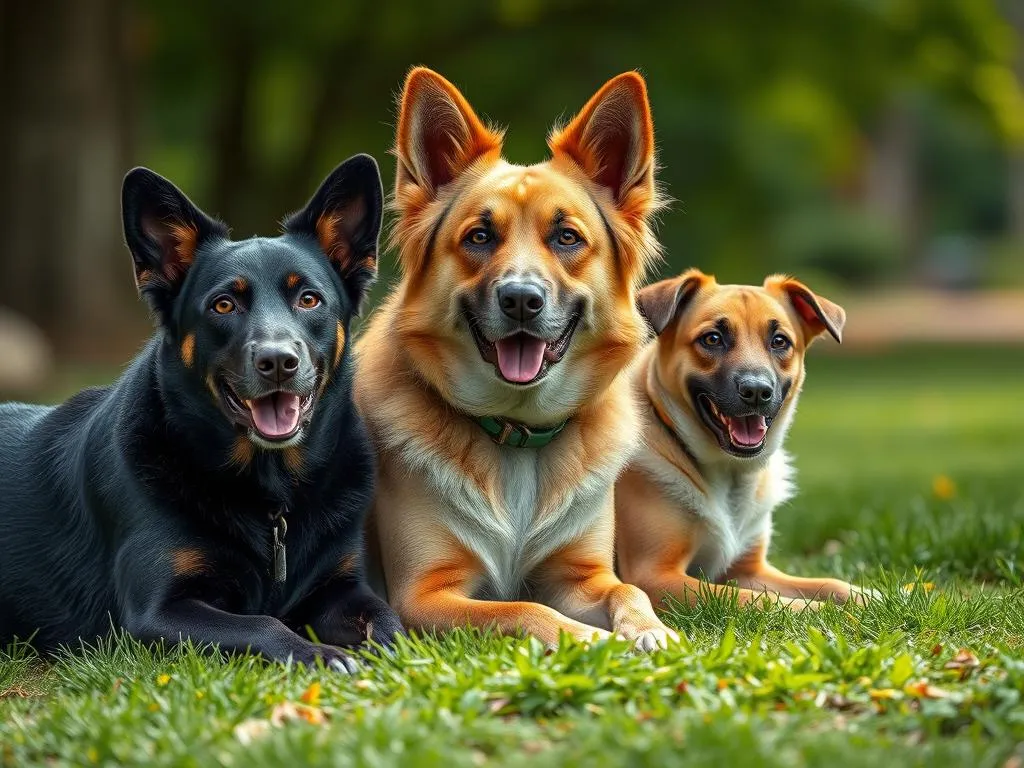
Introduction
In the diverse tapestry of American culture, the united states state dogs hold a special significance that goes beyond mere companionship. These designated breeds serve as symbols of pride for individual states, reflecting local culture, history, and values. State symbols, including flags, flowers, and birds, play a vital role in representing the identity and heritage of a particular region. In this article, we will delve into the fascinating world of state dogs across the United States, exploring their breed characteristics and cultural significance. By the end, you will have a deeper appreciation for these four-legged symbols of state pride.
Understanding State Symbols
Definition of State Symbols
State symbols are designated items that embody the unique identity of a state. They can range from official state birds, flowers, and trees to more whimsical choices like state songs or state dances. Each symbol serves to celebrate and promote the rich heritage of a state, often linked to its geography, history, or economy. For example, the California poppy is celebrated for its vibrant beauty and connection to the state’s natural landscapes, while the Eastern bluebird represents the beauty of the eastern regions of the United States.
The Role of Dogs as State Symbols
Dogs have held a prominent place in American society for centuries, often reflecting the values and lifestyle of the states they represent. The selection of certain breeds as state dogs is steeped in history, with many breeds chosen for their working abilities, companionship, or cultural ties to the region. For instance, the Alaskan Malamute, chosen by Alaska, signifies the state’s rugged wilderness and the importance of sled dogs in its history. The symbolic choice of state dogs underscores the enduring bond between humans and canines in American life.
List of U.S. States with Official State Dogs
Overview of State Dogs
The concept of united states state dogs is relatively recent, with only a handful of states officially designating a breed as their state dog. As of now, approximately 15 states have recognized a specific breed, each with its unique story and characteristics. This section will provide a state-by-state breakdown, highlighting the significance of each breed and its connection to local culture.
State-by-State Breakdown
-
Alabama: American Black and Tan Coonhound
The American Black and Tan Coonhound was designated as Alabama’s state dog in 1971. This breed is known for its exceptional hunting skills, particularly in tracking raccoons. With a keen sense of smell and strong build, they are a beloved symbol of Alabama’s outdoor heritage. -
Alaska: Alaskan Malamute
Chosen as the state dog of Alaska in 2010, the Alaskan Malamute is a powerful and resilient breed, originally bred for hauling heavy sleds. This dog embodies the spirit of adventure and endurance that characterizes life in Alaska’s harsh climate. -
California: California Working Dog
In a unique twist, California recognizes the California Working Dog as its state dog. This designation encompasses various breeds that serve important roles in agriculture, law enforcement, and search-and-rescue operations across the state. -
Colorado: Great Pyrenees
The Great Pyrenees was designated as Colorado’s state dog in 2005. Historically used as a livestock guardian in the mountains, this breed is known for its gentle temperament and strong protective instincts. -
Connecticut: Boston Terrier
The Boston Terrier, known for its friendly demeanor and adaptability, was designated as Connecticut’s state dog in 1979. This breed reflects the state’s urban culture and has become a beloved companion in many households. -
Delaware: Delaware Blue Hen
While Delaware has not officially designated a state dog, the Delaware Blue Hen serves as a significant symbol of the state, representing its rich history and pride in local heritage. -
Florida: American Bulldog
Florida designated the American Bulldog as its state dog in 2020. This breed is known for its strength, loyalty, and versatility, making it a fitting symbol for the state’s diverse and active lifestyle. -
Georgia: American Pit Bull Terrier
Recognized in 2016, the American Pit Bull Terrier symbolizes Georgia’s commitment to responsible pet ownership and community engagement in animal welfare. -
Idaho: Silver Labrador Retriever
Idaho adopted the Silver Labrador Retriever as its state dog in 2021. This breed is celebrated for its friendly disposition and versatility, embodying the spirit of adventure that Idaho offers. -
Maine: Labrador Retriever
Maine chose the Labrador Retriever as its state dog in 2019. Known for their intelligence and friendly nature, Labs are widely loved and recognized as excellent companions and working dogs. -
Massachusetts: Boston Terrier
The Boston Terrier was also designated as the state dog of Massachusetts in 1979, reinforcing its cultural significance in both Massachusetts and Connecticut. -
Minnesota: Labrador Retriever
In 2007, Minnesota designated the Labrador Retriever as its state dog. This breed is popular among families and hunters alike, known for its friendly temperament and intelligence. -
New Hampshire: Chesapeake Bay Retriever
The Chesapeake Bay Retriever was designated as New Hampshire’s state dog in 2010. This breed is renowned for its hunting abilities, particularly in waterfowl retrieval, reflecting the state’s rich outdoor culture. -
New York: Working Dog
New York recognizes the Working Dog as its state dog, symbolizing the diverse roles that canines play in various industries across the state. -
North Carolina: Plott Hound
The Plott Hound was designated as North Carolina’s state dog in 1989. This breed is known for its hunting prowess, particularly in tracking large game, and has deep roots in the state’s history.
Characteristics of Popular State Dog Breeds
General Traits of State Dog Breeds
While each state dog possesses unique characteristics, many share common traits that make them exceptional companions and working dogs. Most state dogs are known for their loyalty, intelligence, and adaptability. These qualities not only make them great family pets but also effective workers in various roles, from hunting and herding to service and therapy.
Notable Breeds and Their Unique Qualities
-
American Black and Tan Coonhound
This breed is renowned for its exceptional sense of smell and strong hunting instincts. With a friendly and affectionate temperament, they are known for their loyalty and make excellent family pets. -
Alaskan Malamute
The Alaskan Malamute is a large and powerful breed, known for its strength and endurance. They are friendly and affectionate, often forming strong bonds with their families. Their history as sled dogs makes them particularly suited for active lifestyles. -
Boston Terrier
Known for their compact size and friendly disposition, Boston Terriers are adaptable and social. They thrive in urban environments and are great companions for families and individuals alike.
Cultural Significance of State Dogs
Regional Preferences and Variations
The choice of united states state dogs often reflects regional preferences and lifestyle. For example, the rugged breeds chosen by northern states, like the Alaskan Malamute and the Great Pyrenees, resonate with the outdoor and agricultural lifestyles of those areas. In contrast, southern states often favor breeds that are known for their companionship and loyalty, such as the American Bulldog and the American Pit Bull Terrier.
Celebrations and Events Featuring State Dogs
Many states host annual events that celebrate their state dogs, fostering community spirit and pride. These events often include dog shows, parades, and educational programs promoting responsible pet ownership. Communities engage with their state dogs through festivals and gatherings, showcasing the important role these breeds play in local culture.
The Process of Designating a State Dog
Legislative Process
The journey to designating a state dog typically involves a legislative process where a breed is proposed and subsequently accepted. Advocacy groups and dog lovers often play a crucial role in raising awareness and garnering support for the initiative. Lawmakers may draft bills that outline the breed’s significance to the state, which then undergoes discussion and approval.
Case Studies
In North Carolina, for instance, the designation of the Plott Hound as the state dog involved extensive advocacy from local residents and breed enthusiasts. The breed’s historical ties to the state, particularly in hunting, played a prominent role in its selection. However, challenges can arise during the legislative process, including opposition from groups that prefer a different breed or concerns regarding breed stereotypes.
The Impact of State Dogs on Local Communities
Promoting Animal Welfare
The recognition of united states state dogs can have a significant impact on animal welfare initiatives within local communities. By highlighting specific breeds, states can promote responsible pet ownership and encourage adoption from shelters. Programs aimed at educating the public about breed characteristics and care can help improve the lives of both pets and their owners.
Enhancing Community Identity
State dogs play a crucial role in fostering a sense of pride and identity among residents. Celebrating these breeds reinforces local culture and community ties. Events featuring state dogs often bring people together, creating opportunities for education and engagement around animal welfare and responsible pet ownership.
Conclusion
The significance of united states state dogs extends far beyond their roles as pets; they are integral to the cultural, historical, and social fabric of their respective states. Each breed tells a unique story, reflecting the values and heritage of the region it represents. Understanding and celebrating these state dogs not only honors their legacy but also reinforces the bond between communities and their canine companions. As you explore your own state’s dog, consider participating in local events or initiatives that promote these beloved breeds and the values they embody.









